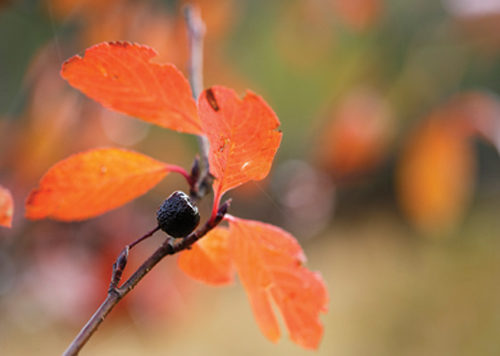Free radicals from the environment, our diets and normal bodily functions are constantly causing mischief in our systems. These unstable molecules develop from weak cellular bonds and are different from healthy cells because they’re missing an electron, which love to live in pairs. Not to be outdone, free radicals scurry around our bodies, looking to scavenge an electron from an innocent and unsuspecting healthy cell (How rude!).
The victims of this savage theft are now changed in structure and function. If these healthy cells are, say, part of a blood vessel wall, vascular damage could occur over time. In fact, free radical damage has been linked to heart disease, cancer and other diseases.
Not to worry; we’re not at the mercy of free radicals. Antioxidants save the day by lending an electron to an unstable molecule in need. Now without an electron itself, other antioxidants work as a team to juggle electrons to maintain stability. For instance, if vitamin C lends an electron, glutathione will donate one to C, and then lipoic acid steps in to give one to glutathione. Experts say the process works well to maintain health if your body has the many necessary resources to keep up the juggling act (1).
Luckily, we have lots of MVPs that keep the juggling team on a winning streak. Here, we present a dozen of the hottest antioxidants that have made researchers and product formulators stop and take notice. Some are already top sellers, according to SPINSscan Natural, powered by Nielsen (see Table 1), while others are increasing more and more in popularity.
Tart Cherry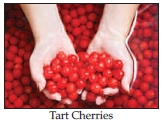
Life is just a bowl of cherries, especially if you’re interested in high-ORAC inflammation support. Michelle White, founder of Michelle’s Miracle Tart Cherry Concentrate, Leland, MI, and National Cherry Festival Signature Spokesperson, explains that unlike sweet cherries, Montmorency tart cherries’ ORAC levels are extremely high. “Studies show that tart cherries outweigh the benefits of sweet cherries,” she says.
Ongoing research indicates these cherries benefit those with joint-related pain and even those who have trouble sleeping, likely because they’re rich in melatonin. In fact, Montmorency tart cherries are said to contain as much as 13.5 ng of melatonin per gram of cherries (2). Melatonin is especially effective because it is both fat and water soluble, unlike most other antioxidants. Tart cherries also contain kaempferol and quercetin.
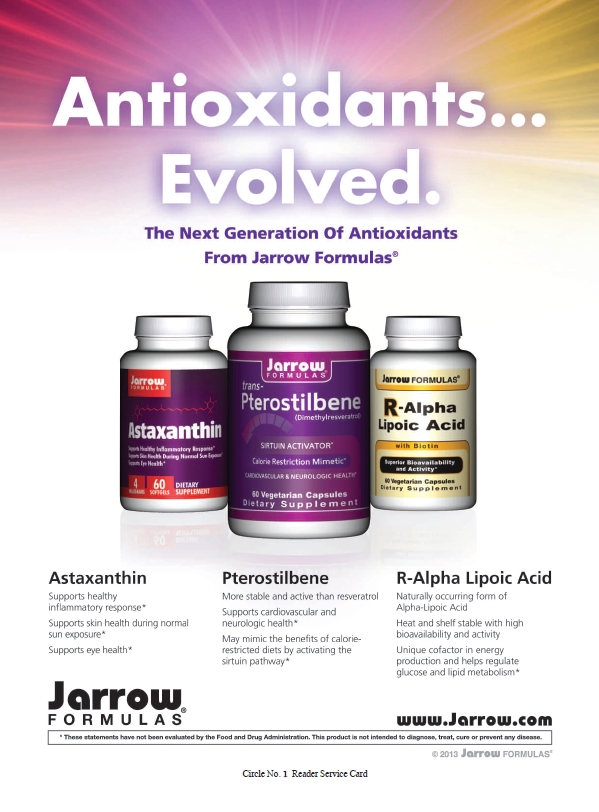 In a 2012 study from Oregon Health and Science University, tart cherries were found to have similar anti-inflammatory compounds to those in aspirin and non-steroidal anti-inflammatory drugs. Women either took tart cherry juice or a placebo for three weeks. Those who consumed the extract had less C-reactive protein (an indicator of inflammation) than those on the placebo (3). Other data based on 633 gout patients found a 35% lower risk of gout attacks in those who ate cherries twice daily (4). And, researchers are also testing the tart cherries’ benefits on athletes. A 2010 trial involving 54 healthy runners found that drinking tart cherry juice (355 mL twice daily) for seven days before a race reduced exercise-related pain (5).
In a 2012 study from Oregon Health and Science University, tart cherries were found to have similar anti-inflammatory compounds to those in aspirin and non-steroidal anti-inflammatory drugs. Women either took tart cherry juice or a placebo for three weeks. Those who consumed the extract had less C-reactive protein (an indicator of inflammation) than those on the placebo (3). Other data based on 633 gout patients found a 35% lower risk of gout attacks in those who ate cherries twice daily (4). And, researchers are also testing the tart cherries’ benefits on athletes. A 2010 trial involving 54 healthy runners found that drinking tart cherry juice (355 mL twice daily) for seven days before a race reduced exercise-related pain (5).
An interesting thing about this extract, and some other superfruits, is that it’s not just available in pill form; it’s readily available as a liquid. “Both offer benefits,” states White. “The concentrate is so easily adaptable to making healthy beverages and folding into everyday meal recipes while offering health benefits—as little as one ounce a day can offer notable benefits. And best of all, tart cherries have the ability to enhance other flavors.” Meanwhile, tablets are helpful for taking on the go.
2012 was a tough year for the tart cherry harvest. The nation’s biggest cherry-producing region in Michigan had a 97% loss in crop due to a warm March and a frost in April that killed the blossoms. The crop in New York and Wisconsin also was diminished because of bad weather. So, the end result has been higher than average prices for the extract (6).
Says White, “While prices soared, the demand has continued to grow at a higher rate than ever experienced before.”
Chaga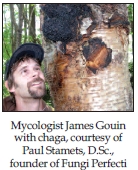
Chaga is not your run-of-the-mill mushroom. “[It] is one of the most nutrient-dense superfoods we have found and, because of its safety, is the ideal supplement ingredient,” says Judy K. Gray, president of North American Herb & Spice, Buffalo Grove, IL. “It has rare nutritional density offering the highly unusual super oxide dismutase combined with beta glucans, germanium, rubidium, pantothenic acid, plus cell-strengthening sterols.”
Possibly one of the most unusual-looking antioxidants on this list, chaga is a fungal parasite that looks like a hard, blackened crust growing on the bark of the birch and beech trees. While its traditional uses have been on the map for thousands of years, it has only recently experienced an upsurge in popularity in the dietary supplements world—and for good reason.
According to mushroom expert and founder of Fungi Perfecti (maker of Host Defense Organic Mushrooms), Olympia, WA, Paul Stamets, D.Sc., the mechanisms behind chaga’s health-
enhancing properties have been researched extensively over the past 20 years. “At first, betulin was identified as a primary constituent augmenting immune response,” he states. “More recently, non-betulin compounds from the mycelium are now known to be responsible for its powerful antioxidant, immune-enhancing and anti-viral properties.”
 In fact, chaga’s ethanol-soluble lanostanic triterpenoid antioxidants are particularly noteworthy due to their ability to reduce oxidative damage (7). “A breakdown in the antioxidant capacity of cells is suspected to underlie various health challenges, such as inflammation, premature aging and some cancers,” stated Stamets in a recent blog (7).
In fact, chaga’s ethanol-soluble lanostanic triterpenoid antioxidants are particularly noteworthy due to their ability to reduce oxidative damage (7). “A breakdown in the antioxidant capacity of cells is suspected to underlie various health challenges, such as inflammation, premature aging and some cancers,” stated Stamets in a recent blog (7).
Stamets cites one study tying chaga’s mycelium to measurable benefits. First, in an in vitro study, researchers induced oxidative stress on lymphocytes (taken from 20 people with inflammatory bowel disease [IBD] and from 20 healthy people) using hydrogen peroxide. Then, the cells were exposed to various doses of chaga extract. Overall, chaga offered a 54.9% reduction in induced DNA damage within the IBD group; the control group experienced a 34.9% reduction in vitro (8).
Now, is this tree-grown mushroom sustainable? According to Stamets, growing methods vary. One can grow the mushroom in a controlled setting, for starters. “Typically, a strain of mycelium is grown in the lab for one to four months, sometimes longer depending upon methods and molecular targets,” he explains, adding, “Growing chaga indoors stabilizes the supply chain, and is economically sustainable, controlling prices.”
Stamets feels, however, that wild harvesting of chaga often is not sustainable. “Evidence of this is that trees hosting chaga are harder to find as harvesters use hatchets to chop off the most readily available ones nearest to roads and paths,” he believes. “As the resource declines and chaga hackers dominate, forests face unprecedented pressures from human assault.”
Stamets says that while the chaga can grow back, the tree’s health suffers because wounds expose its inside to the elements and insects. He also feels that since wild harvesters collect many strains, the end result is an inconsistent product formulation.
Not all companies have these issues. Gray says her company’s chaga is wild harvested through partnerships with sustainable wild harvesters and those who harvest from already logged birch trees so they do not go to waste. She says when live trees are used, the company’s suppliers take extra care to ensure minimal effect on the tree. “We do not harvest from below the surface of the tree. Because of this, we have seen many chagas that have begun to regrow after being harvested,” says Gray.
This method not only ensures sustainability, but also potency. Says Gray, “The source of chaga’s nutritional benefit is exactly what some have removed from the process, which is the birch tree. It is through the birch tree that the chaga drives its vast nutrient content and when grown in a lab it will not have the same benefit. This is why you must look for the wild harvested variety.”
Astaxanthin
Experts say astaxanthin is one of the strongest natural lipophilic antioxidants known to man. Astaxanthin has many unique properties. First, Rudi E. Moerck, Ph.D., president and CEO of Valensa, Eustis, FL, says astaxanthin is “an order of magnitude more effective than most other antioxidant compounds,” which makes it better at addressing the “many age-onset conditions related to oxidative stress, usually at a lower dose than other carotenoids.”
Gerald R. Cysewski, Ph.D., founder and chief scientific officer at Nutrex Hawaii, Kailua-Kona, HI, says this antioxidant can cross the blood–brain and blood–retinal barriers, meaning it can “deliver antioxidant and anti-inflammatory protection to the brain and eyes.”
Astaxanthin also has other unique properties. It quenches singlet oxygen stemming from oxidative damage, says Moerck. It also traps peroxyl radicals, “thus inhibiting that pathway of lipid peroxidation,” he explains. Plus, it bolsters antioxidants like vitamins A and E, and complements vitamin C.
Remember the juggling act of antioxidants? States Moerck, “Even more importantly, astaxanthin’s chemistry will stop many antioxidants’ tendency to become ‘pro-oxidants.’”
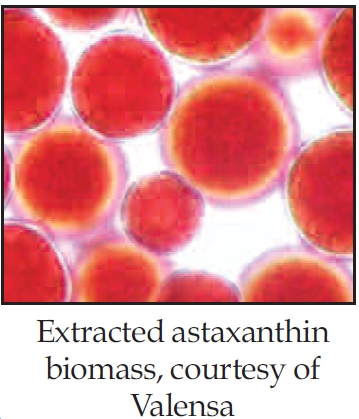 Also unique is its ability to protect cells from ultraviolet light. Moerck says studies on his company’s branded astaxanthin (Zanthin) indicate it does the job better than both beta-carotene and lutein in eye health studies. Skin health, too, is being explored. States Moerck, “Research suggests that use of astaxanthin can increase the skin’s ability to resist environmental damage from sunlight, and prevent and reduce the presence of UV-induced wrinkles.”
Also unique is its ability to protect cells from ultraviolet light. Moerck says studies on his company’s branded astaxanthin (Zanthin) indicate it does the job better than both beta-carotene and lutein in eye health studies. Skin health, too, is being explored. States Moerck, “Research suggests that use of astaxanthin can increase the skin’s ability to resist environmental damage from sunlight, and prevent and reduce the presence of UV-induced wrinkles.”
When astaxanthin is manufactured from the microalgae Haematococcus pluvialis in open water sources, its supply can be affected by harsh weather and climate change. Those interviewed for this piece feel the supply and pricing of their astanxanthin is stable nonetheless. States Cysewski, “We are very fortunate in Hawaii to not have been affected by recent weather challenges. Nutrex Hawaii’s astaxanthin production has increased over the last years.”
Meanwhile, Valensa has seen increased demand for astaxanthin, thus affecting “the availability of high-quality astaxanthin biomass and the capacity of sophisticated facilities to extract this biomass into a stable, useable form,” says Moerck. The company thus sources its astaxanthin from multiple suppliers while maintaining its proprietary extraction and stabilization processes.
Curcumin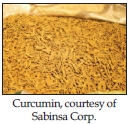
Yellow certainly isn’t mellow when it comes to the antioxidant might of curcumin. This compound, extracted from the turmeric root, “has been credited with alleviating a variety of conditions, including chronic muscle pain, irritable bowel syndrome, depression and heart disease,” states Cheryl Myers, chief of education and scientific affairs at EuroPharma, Inc., Green Bay, WI.
Part of the reason for these effects, says Shaheen Majeed, marketing director for Sabinsa Corporation, East Windsor, NJ, is the broad-spectrum nature of curcumin, as shown in several studies. “Since inflammation is now recognized as a root cause of several life style diseases and conditions, researchers and formulators are looking toward curcumin as a potent dietary supplement for several health conditions,” he states. Indeed, Myers says curcumin has 112 different molecules that simultaneously affect multiple pathways on various levels.
Thus, research on curcumin is plentiful. For instance, Majeed’s company published more than 10 research papers on its curcumin ingredient (Curcumin C3 Complex) in 2012 alone.
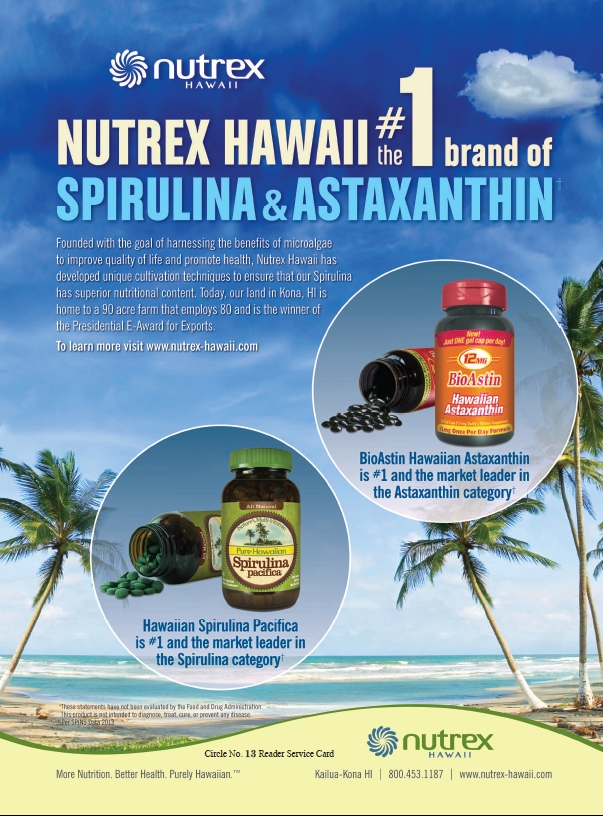 Companies often combine curcumin with other ingredients. For instance, Myers feels curcumin (as BCM-95) is a good companion to boswellia (as BosPure) and other supportive ingredients for stopping inflammatory and cellular damage to the joints while helping them heal.
Companies often combine curcumin with other ingredients. For instance, Myers feels curcumin (as BCM-95) is a good companion to boswellia (as BosPure) and other supportive ingredients for stopping inflammatory and cellular damage to the joints while helping them heal.
Some use curcumin combinations to get around any absorption problems. “The biggest challenge for therapeutic uses of curcumin is its molecular size,” says Myers. “It is simply not well absorbed, even as a standard extract. So, even if you start off using a lot of curcumin, only a little of it will end up ‘hitting the target.’”
To support proper absorption of curcumin, Majeed’s company combines curcumin with a bioavailability enhancer (BioPerine). “BioPerine has been clinically proven to function as a bioavailability enhancer when used with Curcumin C3 Complex,” states Majeed.
Another way to address the bioavailability question, he adds, is to use a curcumin metabolite called tetrahydrocurcumin (THC). This active metabolite is produced once curcumin enters the biological system, says Majeed, and has stronger activity than curcumin itself. “THC has also shown a better absorption profile and better stability at physiological pH, which means not only that it can be absorbed better, but also that it can be transported more efficiently inside the body. Thus, supplementing THC can be key to bioavailability,” states Majeed.
Myers adds another technique: minimizing the particle size for optimal absorption. Her company uses a micronized form blended with turmeric oils to improve absorption and blood retention. She says, “This means it does a better job inhibiting COX-2 enzyme activity, reducing pain, stopping DNA damage and oxidative stress and performs a host of other healthy duties.”
As for curcumin’s supply, Majeed feels his company’s grass roots chain with contract farmers is very reliable. He states, “Last year, Sabinsa supplied Curcumin C3 Complex to its clients when the market was facing the supply situation. Sabinsa will do whatever it takes to prevent prices on Curcumin from going north.”
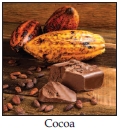 Cocoa
Cocoa
Chris Kilham, The Medicine Hunter, believes, “Next to water, cocoa is the healthiest substance” (9). Its high antioxidant power has been linked to energy, brain and immune health. In addition, “It can easily replace a number of psychiatric drugs for mood, plus it produces the same chemistry in the brain that occurs when we fall in love,” Kilham states (9).
Heather K. Terry, co-founder of NibMor, Great Neck, NY, adds another key benefit: heart health. She says companies like hers are enthusiastic about cocoa because “there are more and more studies supporting chocolate as being heart healthy by increasing blood flow to the brain and heart, potentially lowering blood pressure, 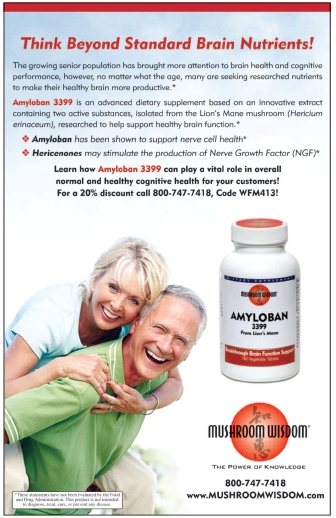 helping blood platelets to be less sticky and therefore they clot more easily and also positively impacting vascular health.” These benefits are attributed to the flavonols in cocoa, which are more prevalent in supplements and dark chocolate than milk. “Sorry, milk lovers,” says Terry. “You’re really just consuming a whole lot of milk and sugar. And, steer clear of the highly processed and commercially marketed stuff.” High-heat processing and alkalizing cocoa kills off the flavonols that make chocolate healthy, she states.
helping blood platelets to be less sticky and therefore they clot more easily and also positively impacting vascular health.” These benefits are attributed to the flavonols in cocoa, which are more prevalent in supplements and dark chocolate than milk. “Sorry, milk lovers,” says Terry. “You’re really just consuming a whole lot of milk and sugar. And, steer clear of the highly processed and commercially marketed stuff.” High-heat processing and alkalizing cocoa kills off the flavonols that make chocolate healthy, she states.
When choosing chocolate for your stores, select those that don’t take part in unfair labor practices and are made with sustainability in mind. The environmental aspect is key because cocoa trees should be treated with care. Terry explains they can grow for up to 100 years old and are productive for about 60 of those years. She says, “We have to treat these plants with respect or we’ll see a repeat in what is happening with our subsidized and GMO crops in the U.S. (destruction of farm land, potential health risks to consumers, etc.). We also have to respect the farmer. By paying these crop keepers fairly, they are able to have a good life and care for the crop properly. When ethical trade practices are abided by we can educate and take care of this amazing plant!”
For more, see this month’s Supplement Highlights on Cocoa.
Sea Buckthorn
Everyone knows that omegas are hot—very hot. Combine their benefits with some antioxidant punch, and you’ve got a winner.
Such is the case with sea buckthorn. According to Peter McMullin, president of Sibu, LLC, Midvale, UT, these little berries contain over 190 bioactives including vitamins, minerals, flavonoids, carotenoids and amino acids. It also has the superantioxidant superoxide dismutase. But one of the most unique properties of these berries is their essential fatty acid content, which includes omegas-3, -6, -9 and “the most omega-7 found in any plant or animal source,” states McMullin.
Dubbed by Drs. Oz and Roizen as the “new good fat,” omega-7 is a chief reason why researchers and formulators love sea buckthorn. States James Liu, president of SeabuckWonders, Chicago, IL, “This new ‘it’ omega is gaining notoriety from studies indicating it supports cardiovascular and heart health, general immunity, gastrointestinal health, anti-aging, and it is very well known for hair, skin and nails, and may even assist in weight loss.”
The new excitement about sea buckthorn is for healthy weight management. States McMullin, “It recently has been proposed by a group of Harvard medical researchers that omega-7 (palmitoleic acid) signals the body to store less fat, given a high-fat diet.”
Liu adds that a breakthrough study (10) found sea buckthorn had much promise as a weight-management ingredient. “[It included] two mice on a high-fat diet—the one supplemented with sea buckthorn maintained his normal weight while the one without blew up to obese proportions,” states Liu.
As for the supply, both McMullin and Liu say the plant is hardy and can survive many harsh environments. They are confident their supply can withstand most weather issues.
French Maritime Pine Bark Extract
One of the all-star players in the antioxidant category is none other than French maritime pine bark extract. Victor Ferrari, CEO of Horphag Research (distributor of Pycnogenol), Hoboken, NJ, says his company has invested millions of dollars in scientific research into his company's branded extract (Pycnogenol) over the past 40 years, making it one of the “best-documented, safest and clinically most successful ingredients in this industry.”
With hundreds of human clinical trials backing its benefits, this extract is bound to continue its dominance in the supplements category. In fact, SPINs recorded a 29% spike in revenue from this ingredient in the natural channel over the past year (52 weeks ending Jan. 19, 2013) (see Table 1).
According to Heidi Senecal, director of sales for I.BioCeuticals, Inc. (North American Supplier of MASQUELIER’s French Pine Bark and MASQUELIER’s OPCs), Orleans, MA, Jack Masquelier, an original researcher of the extract, was taken with its wide ranging health benefits. Senecal says these include “powerful vascular support and protection through its antioxidant and collagen-specific activity. Health benefits also include leg vein, eye and overall organ health.”
 Research on Horphag's branded extract (Pycnogenol) is ongoing, and Ferrari gives us a taste of what’s to come. A large study is currently underway in Australia investigating Pycnogenol's ability to support improved cognitive function.
Research on Horphag's branded extract (Pycnogenol) is ongoing, and Ferrari gives us a taste of what’s to come. A large study is currently underway in Australia investigating Pycnogenol's ability to support improved cognitive function.
Trees used to make French maritime pine bark extract are grown in France, where they have been controlled by the French Ministry of Health since 1968, says Senecal. Her company uses trees from the Les Landes region, “where they are sustainably grown and harvested.” The company only uses bark of fully grown “coupe finale” trees that are 35–40 years old. The harvesting is sustainable, Senecal explains, because “each tree is completely used for a number different purposes; the bark is considered waste.
Ferrari adds that trees must be replanted by French law, so an abundance of these trees is available.
Green Coffee Extract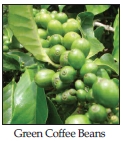
For months, WholeFoods has been tracking the upsurge in sales from green coffee bean (GCB) extract in our What’s Selling analysis, and bolstering this trend is our readers’ selection of GCB as the winner of our 2013 Natural Choice Award in the Weight-Support Supplements category.
GCB extract was put on the map by The Dr. Oz Show, but shoppers clearly love everything this antioxidant has to offer. Experts say what makes GCB so special is its high content of chlorogenic acids, “antioxidants that have a positive interaction with several steps of the glucose-regulation process,” states Antoine Bily, Ph.D., R&D director for Naturex, South Hackensack, NJ. “These compounds work by simultaneously limiting the absorption of carbohydrates in your body and helping to manage stored fat.”
Michael Smith, M.D., senior health science specialist at Life Extension, Fort Lauderdale, FL, explains how this works: Chlorogenic acid inhibits carbohydrate-digesting enzymes, amylase and glucosidase. “By slowing their activity, sugar absorption decreases, which minimizes post-meal sugar spikes. This indirectly improves insulin sensitivity,” states Smith.
Speaking of improved insulin sensitivity, chlorogenic acid “increases the expression of IDX-1 and signals proteins for improved insulin response after eating carbs,” he adds.
There’s more. Lindsey Duncan, N.D., C.N., founder and CEO of Genesis Today, Austin, TX, explains that chlorogenic acids may inhibit the glucose-6-phosphatase enzyme system. This enzyme, says Duncan, may initiate glucose formation from the liver. “Therefore, it is thought that chlorogenic acids in the coffee bean may be responsible, at least in part, for the reduced risks of glycemic disorders with long-term use…these same effects are also the likely reason for its purported antiobesity effects,” he explains.
|
A Berry Interesting Weight-Management Product In a 2012 episode of The Dr. Oz Show, Dr. Mehmet Oz called raspberry ketones, “The Number One miracle in a bottle to burn your fat” (1). And with that, the frenzy for raspberry ketones commenced. While some readers may sell it in their natural supplements businesses, it’s noteworthy that others choose not to. One supplier told WholeFoods Magazine that most raspberry ketones are synthetic, mainly because producing the ingredient in a natural form would be cost prohibitive. Ask your manufacturer if you have questions about the specific raspberry ketones you sell. Those who support raspberry ketones feel there is much truth to the claim that this ingredient benefits healthy weight management. Raspberry ketones, according to Robert LoMacchio, CEO and founder of Bio Nutrition Inc., Island Park, NY, prevent fat absorption through the small intestines by stimulating lipolysis (i.e., the process that breaks down fats). “If fats can’t be absorbed, they subsequently cannot be stored and cause weight gain,” states LoMacchio, noting that human clinical trials studying this effect are underway. “There have been numerous non-human studies, and several conducted with mice show lots of promise.” LoMacchio feels raspberry ketones are different from other healthy weight management supplements because they are caffeine free and do not cause jitters or a laxative effect. “Cleansing can be good, it is just not the most preferable way to lose weight in my opinion,” states LoMacchio. Though studies aren’t conclusive, anecdotal evidence suggests raspberry ketones may help support healthy energy levels, mood and memory. Reference |
The processing of GCB extract is a topic of debate, according to Hartley Pond, vice president of technical sales at VDF/FutureCeuticals, Momence, IL. He states that his company conducted an in-depth study of several GCB extracts. “Chemical profile results revealed a pervasive market presence of questionable green coffee bean extracts with inconsistent total chlorogenic acid levels across testing methods, and disproportionate representative levels of the various natural chlorogenic acid moieties typically found in green coffee beans,” Pond explains.
He says this means some extracts were adulterated with cheaper, non-GCB sources of chlorogenic acid. Thus, companies and retailers should make sure they use reputable suppliers that conduct thorough identity testing.
Bily explains that his firm only sources Robusta beans for its ingredient (Svetol): “Our proprietary extraction process yields an extract with an exact profile of specific chlorogenic acids.” Each batch is tested for consistency, contaminants and potential adulterants. These extra steps are worth it. States Bily, “The processing of GCBs for Svetol is absolutely key to ensuring a product whose performance matches its claims.”
Companies also say the beans should not be roasted, which Smith says removes some of its antioxidant content and its chlorogenic acid yield.
Buyers may also want to ensure suppliers take part in Fair Trade practices. Bily says his company’s supply comes from the Ivory Coast, where coffee beans are essential to their annual income. He states, “We ensure an ethical business practice by paying as promised, being in direct contact with small holders, and never changing the rules when we make purchases.”
Some also worry that global warming will affect coffee bean production due to “coffee rust.” Caused by a fungal outbreak, this disease could lead to a “widespread defoliation of the coffee plant and marked reduction in yields of whole coffee, the fruit and the bean inside,” according to Pond. There is currently an alarming outbreak in Central America and Mexico. For now, though, the supply is secure.
Before moving on, another coffee extract is worth mentioning. The fruit that covered the beans before processing also contains “high levels of antioxidants, including proanthocyanidins not found in the green coffee bean,” says Pond. He cites a British Journal of Nutrition study comparing this whole coffee concentrate (NeuroFactor, from VDF/FutureCeuticals, Inc.), GCB extract, cholorogenic acid and caffeine from coffee for their ability to stimulate brain-derived neurotrophic factor (BDNF). This protein supports neurons and protects against neurodegeneration. States Pond, “Only NeuroFactor showed a statistically significant ability to increase BDNF in humans.”
Moringa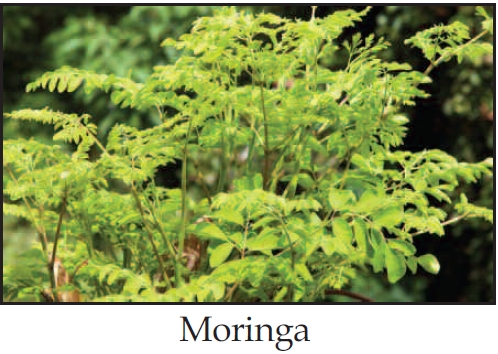
Some people always want more; others, just want moringa. Native to India, the leaves of this tree or shrub have been used in Ayurvedic medicine for thousands of years. It was believed to offer stamina and strength (11). Today, it is said to provide numerous health benefits from immune support to skin health to heart/blood sugar support and more. As for why, its unique makeup is the key: one gram of moringa dried-leaf powder contains 25 times the iron of spinach, 17 times the calcium of milk, 15 times the potassium of bananas, 10 times the vitamin A of carrots, nine times the protein of yogurt and 0.5 times the vitamin C of oranges (11).
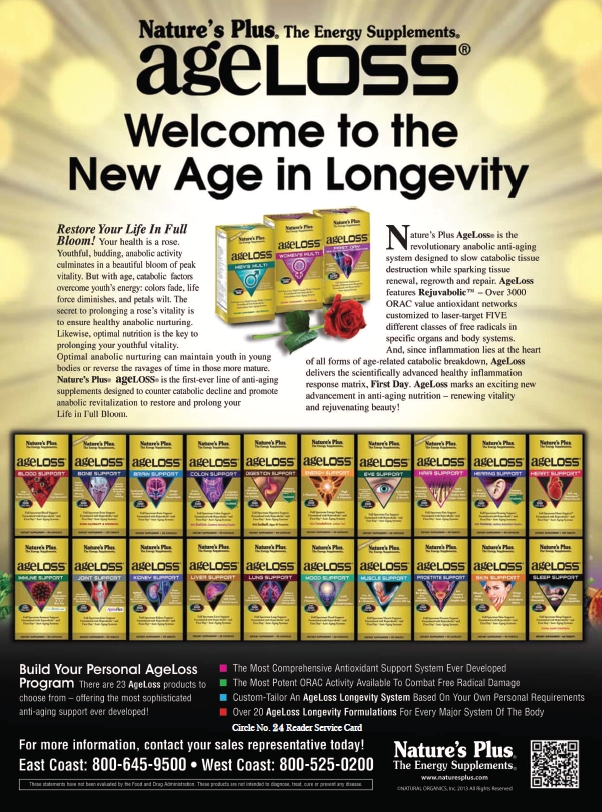 Heather Henning, national sales manager of Organic India, Boulder, CO, says the company’s director of research and product development Narenda Singh, M.D., feels moringa “can provide enough nutrition to keep poor people from starving.” She adds studies support its use for breast-feeding support, heart health and immune system health, noting that moringa (in addition to the previously mentioned nutrients) also contains B12, thiamine, riboflavin, calcium, essential amino acids, potassium, lutein, quercetin, oleic acid and kaempferol. “The dried leaves are about 17% protein,” she states.
Heather Henning, national sales manager of Organic India, Boulder, CO, says the company’s director of research and product development Narenda Singh, M.D., feels moringa “can provide enough nutrition to keep poor people from starving.” She adds studies support its use for breast-feeding support, heart health and immune system health, noting that moringa (in addition to the previously mentioned nutrients) also contains B12, thiamine, riboflavin, calcium, essential amino acids, potassium, lutein, quercetin, oleic acid and kaempferol. “The dried leaves are about 17% protein,” she states.
As for its sustainability, Henning says it grows readily throughout India, and leaves can be harvested every 45–60 days during warm seasons.
Jude Ken-Kwofie, founder and owner of It’s Moringa, It’s For Life—Nourish Yourself, Nourish Another, says his company follows the stringent requirements of fair trade and organic certifications. “For example, we are supporting our farmer based organization moringa partner Good Harvest Farmers Co-op to properly complete the fair trade and organic certification process,” says Ken-Kwofie.
He adds India isn’t the only place where moringa is grown. His company sources its supply from Ghana. Although there’s been an increase in abnormal weather here, “the weather where we grow and harvest our moringa has stayed the same. In fact, our moringa grows in a region with the highest rainfall in Ghana. It also has lush green hills and fertile soils,” states Ken-Kwofie.
Quercetin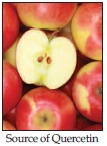
When allergies get tough, the tough often get moving to quercetin. This flavonoid derived from various fruits, flowers, vegetables and blue-green algae, is known for its antioxidant power. "Quercetin is an abundant flavonoid that is significant as a building block for numerous other flavonoids," says Dallas Clouatre, Ph.D., consultant for R&D, Jarrow Formulas, Inc. Los Angeles, CA. "For instance, quercetin is one half of the rutin molecule, another flavonol. Quercetin by itself is a more active antioxidant than is rutin. It is also known as meletin and sophretin."
Research indicates it acts as an antihistamine and anti-inflammatory agent, and helps support energy and endurance.
Quercetin may inhibit the activation of certain cells like mast cells (which are rich in histamine) as well as the white blood cells basophils and neutrophils. "Similarly, quercetin has been shown to inhibit tyrosine kinase, the synthesis of inducible nitric oxide and the actions of NF-kappa-beta, all of which are often inappropriately active when the immune system is overly sensitive to components of the everyday environment," states Clouatre. Quercetin may affect the pathways that turn fatty acids into various inflammatory prostaglandins and eicosanoids.
Some of these effects have been tested in studies. According to Trisha Sugarek MacDonald, BS, MS, director of research and development, and national educator for Bluebonnet Nutrition Corporation, Sugar Land, TX, “In test tubes, quercetin prevents immune cells from releasing histamines, chemicals that cause allergic reactions by stabilizing mast cells. Mast cells have been proposed as an immune gate to the brain, as well as sensors to environmental stress. On that basis, researchers think that quercetin may help reduce symptoms of allergies, including runny nose, watery eyes, hives, and swelling of the face and lips.” While these data are interesting, much of the research was not conducted on humans.
Other evidence says Sugarek MacDonald, suggests quercetin may help reduce the risk of atherosclerosis, prevent LDL cholesterol oxidation and support healthy blood pressure by increasing nitric oxide levels. Meanwhile, its anti-inflammatory effects may benefit those with rheumatoid arthritis because “quercetin inhibits both COX-2 and lipo-oxygenases activities that are involved in inflammatory pathways,” states Sugarek MacDonald.
And Clouatre adds that quercetin may inhibit an enzyme called aldose reductase, which converts glucose to sorbitol and is "excessively active when blood sugar concentrations are high," says Clouatre. "The accumulation of sorbitol in the nerves in the peripheries is associated with poor nerve function and with damage to the lens of the eye."
Green Tea Extract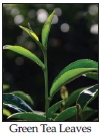
Next to water, tea is the most-consumed beverage (12), and green tea is right up there on the list of popular teas. Just why is green tea, in beverage or supplement form, so good for us? “The minimal processing contributes to the maintenance of the natural polyphenol profile of the fresh leaves,” Pond explains. “Green tea’s long association with good health and well-being are attributable to these polyphenols.”
Green tea boasts important flavanols, including catechins and catechin gallates. Among the most prominent of these polyphenols—which usually accounts for 40% of green tea—is epigallocatechin gallate (EGCG). Research suggests “EGCG and green tea polyphenols have anti-inflammatory and anticancer properties that may help prevent the development and growth of skin tumors” (12).
Another key component of green tea is the amino acid L. theanine. “Research has shown that L. theanine may reduce stress and improve cognition,” states Pond.
Green tea’s health benefits are diverse. According to Pond, “Clinical laboratory and epidemiological research indicates that green tea catechins may support cardiovascular health, contribute to improved mental acuity and decreased levels of anxiety and stress, support healthy weight management, and contribute to healthy aging.”
Argan Oil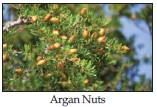
Many with dry or damaged hair swear by the use of argan oil to revitalize their locks, as it is said to penetrate the hair shaft and smooth split ends. According to W.S. Badger Company, “Argan oil is rich in vitamins, proteins and essential fatty acids, which strengthen and soften hair at the same time” (13). It is also great for smoothing, moisturizing and revitalizing the skin.
Part of the reason for argan oil’s benefits is that it is rich in vitamin E and linoleic acid, both of which have anti-inflammation properties (14). Some evidence points to its heart health benefits (especially for cholesterol support) when taken orally. WF
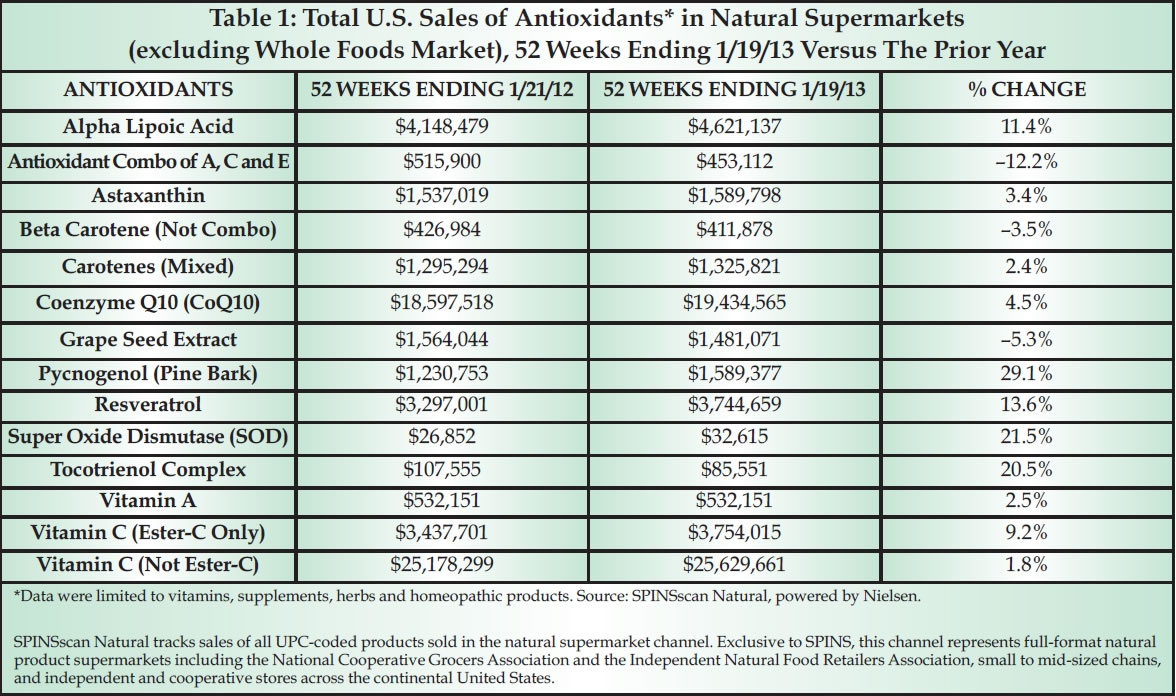
References
1. “Can You Get Too Many Antioxidants?” The World’s Healthiest Foods, http://whfoods.org/genpage.php?tname=george&dbid=143, accessed Feb. 28, 2013.
2. “Why Melatonin in Montmorency Tart Cherries Is So Beneficial for Your Health,” www.livingnaturally.com, accessed Feb. 26, 2013.
3. K. Ravn, “Fruitful News from Tart Cherry Studies,” Los Angeles Times, July 14, 2012 http://articles.latimes.com/2012/jul/14/health/la-he-sour-cherry-20120714, accessed Feb. 26, 2013.
4. Y.Zhang, et al., “Cherry Consumption and the Risk of Recurrent Gout Attacks,” Arthritis Rheum. 64 (12), 4004–4012 (2012).
5. K.S. Kuehl, et al., “Efficacy of Tart Cherry Juice in Reducing Muscle Pain During Running: A Randomized Controlled Trial,”
J. Int. Soc. Sports Nutr. 7:17 2010.
6. D. Ramde, “Midwest’s Tart Cherry Crop Destroyed by Weather,” www.huffingtonpost.com/2012/07/13/midwest-tart-cherry-crop_n_1670226.html, accessed Feb. 26, 2013.
7. P. Stamets, “Chaga, the Clinker Fungus: This Mushroom Looks Scary But Can Benefit Health,” Oct. 25, 2012, www.huffingtonpost.com/paul-stamets/chaga-mushroom_b_1974571.html, accessed Feb. 26, 2013.
8. M. Najafzadeh, et al., “Chaga Mushroom Extract Inhibits Oxidative DNA Damage in Lymphocytes of Patients with Inflammatory Bowel Disease,” Biofactors. 31 (3-4), 191–200 (2007).
9. “Chris Kilham is Crazy for Cocoa” WELLBELLA with the Medicine Hunter, March 2011, http://medicinehunter.com/mediahit/chris-kilham-crazy-cocoa, accessed Feb. 28, 2013.
10. J. Wang, et al., “Hypolipidaemic and Hypoglycaemic Effects of Total Flavonoids from Seed Residues Of Hippophae Rhamnoides L. in Mice Fed a High-Fat Diet,” J. Sci. Food Agric. 91(8), 1446–1451 (2011).
11. “The Ingredient: It’s Moringa Dried Leaves,” It’s Moringa.
12. “Green Tea,” University of Maryland Medical Center, www.umm.edu/altmed/articles/green-tea-000255.htm, accessed Feb. 28, 2013.
13. W.S. Badger Company, www.badgerbalm.com/p-493-argan-hair-oil-for-dry-damaged-hair.aspx#sthash.hLNylj2K.dpuf, accessed Feb. 28, 2013.
14. L. Johannes, “Hard Nut to Crack,” Wall Street Journal Online, June 11, 2012, http://online.wsj.com/article/SB10001424052702
303768104577460504019108684.htm, accessed Feb. 28, 2013.
Published in WholeFoods Magazine, April 2013

